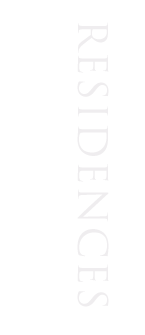A History of the Chateau de Langeais
Around the year one thousand, the
region of Touraine in France was coveted by two lords:
Foulque Nerra, count of Anjou,
and Eudes I, count of Blois. By the end of the
tenth century, Foulque Nerra
had conquered the site of Langeais, not far from Tours. A
castle was then founded on the promontory, and of all this, only
remnants of the keep tower remain. After this period
Langeais has a eventful history, occupied in turn by the
counts of Blois and those of
Anjou.
In 1044 Langeais is passed, along
with the whole of Touraine, into the hands of the Plantagenets,
and then into those of the kings of England, their heirs.
In 1206 however, Langeais entered into the domain of the King of
France, as a consequence of
Philip Augustus’ victories over
king John of England.
From this period onward, the fief of Langeais is granted to
various important lords closely related to the king.
During the Hundred Years’ War,
Langeais more than once served as a hideout to armed war-bands.
Aware of the danger that this type of occupation could bring,
Charles VII decided to
regain posession of the castle. Athough he in 1422 he reclaimed
the domain and had all fortifications except for the “grand
tower” demolished, he awarded the castle to his faithful
Scottish knight, Sir Thomas Seton, who was thus titled as
"Seigneur de Langeais".
During the second half
of the 15th centrury, Langeais remained important. As
a reaction against the League of the Common Good (a coalition
of important lords against the king), in which the duke of
Brittany actively participated,
Louis XI had a new castle built on the eastern edge of
the promontory. In 1465 and in 1467 building activity was in
full swing. The works were under the command of Jean Bourré, the
faithful councillor to the king, in cooperation with
Jean Briçonne, another servant
of the king and first mayor of Tours.
However, after the
troubles with the Leage of the Common Good, in 1468
Louis XI had to face a
far more dangerous enemy: the
duke of Burgundy, Charles the Bold. Construction at
Langeais is halted. In July 1466 the castle built at the
initiative of the king, is ceded to
Dunois, the king’s cousin and
son of Joan of Arc’s companion.
At Dunois’ castle
the marriage of Charles VIII
and Anne of Brittany takes place, at the dawn of 6
December 1491. This marriage puts an end to the troubles between
France and Brittany, and marks the beginning of the connection
of this province to the French crown.
The marriage is assisted by a limited
company, in one of the great halls of the castle. The contract
of marriage stipulates that the two spouses mutually donate
their rights to the duchy. Anne also obliged herself to
marry the new sovereign, if the king was to die childless, and
that is precisely what happened: all children of the royal
couple die either at birth or during minority.
Charles VIII died in
1498, at Amboise castle and
Anne of Britanny then married
Charles VIII’s cousin, Louis of
Orléans, who will reign as
Louis XII.
After the 15th century,
Langeais castle passed to various persons and was kept in a
state of bad repair. Only
Christophe Baron, owner in April 1839, untertook some
restoration works and bought a collection of furniture.
Unfortunately his son had to sell a large part of this
collection to pay off considerable debts. After the son’s
death, the castle was bought by
Jacques Siegfried.
Jacques Siegfried,
born in Mulhouse in 1840, was a very active businessman, and as
a banker he was commissioned by the French government to
research the best ways to develop French commerce abroad.
Impassioned for medieval art, he bought Langeais on 28 July,
1886, and spent the next eight years of his life restoring and
refurnishing the castle, thus reconstructing the living
conditions of the nobility at the end of the Middle Ages.
In 1904 he donated both the Chateau
and his rich collection of art to the Institut de France, that
still owns it today.
| 
